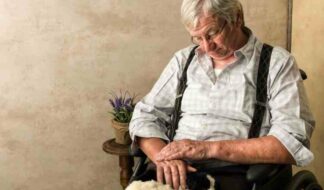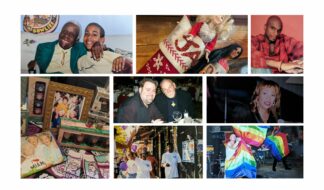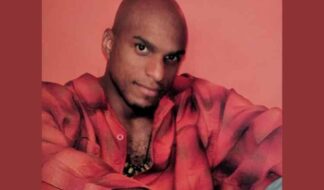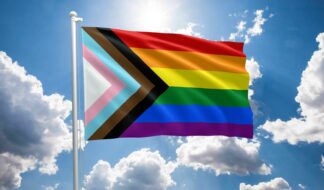By Gwendolyn Ann Smith
We're coasting into the end of summer.
The days are hot and humid, and where I am sitting the smoke of distant wildfires tinges the sky. Everyone is sated on the political machinations of way too many candidates for an election that is still more than a year away.
In the transgender community, we have the start of both the "I Am Cait" and "I Am Jazz" reality shows, both featuring eponymous transwoman. You'd think it would be a nice time to relax in front of the air conditioner and reflect on how great things are going here on the other side of the "transgender tipping point" that Time Magazine proclaimed last year.
I feel, however, the need to drop a dose of reality.
Back in the late 1990s, I created the Transgender Day of Remembrance, a project that each autumn seeks to raise awareness of anti-transgender murders. With that in mind, I need to tell you about this summer.
It was shortly after Memorial Day weekend, which many in the U.S. consider the start of summertime grilling and swimming, that Mercedes Williamson's body was discovered buried in a field in Rocky Creek, Alabama. Josh Vallum had stabbed her to death on May 30. She was 17 years old.
On July 21 — just after midsummer — the body of a black transgender woman by the name of India Clarke was found outside of the University Area Community Center in Tampa Bay, Florida. The 25-year-old was beaten to death.
Two days later, K.C. Haggard was found dead, stabbed to death in the street in Fresno, California. CCTV in the area not only recorded the crime, but other residents ignoring K.C.'s cries for help. She was 66 years old.
In Dallas, Texas, on July 29, the body of Shade Schuler, a 22-year-old black transwoman, was discovered in a field off Riverside Drive. Her body was so badly decomposed that it took an additional two weeks for the police to identify her. It's unknown when she was killed.
And then there's August.
The body of Elisha Walker was discovered in a poorly constructed grave in Johnson County, North Carolina. She had been reported missing on Nov. 11, 2014. The burial site was 100 miles from where Walker lived.
Amber Monroe was shot as she left a car at Six Mile and Woodward in Detroit, Michigan on Aug. 8. She was 20 years old, black and known by her friends as someone who always had a smile on her face.
Late in the evening on Aug. 11, Kandis Capri, a 35-year-old black transwoman from Phoenix, Arizona, was shot several times outside an apartment block.
Finally, a little over a week past Monroe's death, information revealed that Ashton O'Hara's body had been discovered in a field in Detroit. Ashton was a black transgender/genderfluid person.
Now, that is simply the summer months. Let's talk for a moment about the rest of this year. If we count from January, those eight names above are added to nine more:
o Papi Edwards, Jan. 9
o Lamia Beard, Jan. 17
o Ty Underwood, Jan. 26
o Yazmin Vash Payne, Jan. 31
o Taja Gabrielle de Jesus, Feb. 8
o Penny Proud, Feb. 10
o Bri Golec, Feb. 13
o Kristina Grant Infiniti, Feb. 15
o London Chanel, May 18
Seventeen names. Sixteen if you only focus on those killed during this year, given Elisha Walker missing since last year.
Let's not miss this, too: as many people as that is who were murdered, this is only the known cases within the U.S. If you include the rest of the world, the numbers go well past a hundred.
Oh, and one more thing about these numbers. Yes, 17 is high this year for the U.S., but 12 died in the country last year, and 15 here in 2013. These deaths have been happening at a high level for many years: the difference is our awareness of them.
When I first started examining anti-transgender violence in 1998, many cases were not covered in the media. If they were, it would often be a nameless "man in a dress" you might read about.
I'm sure that plenty of cases were treated like that of Papi Edwards earlier this year, where a presumably transphobic investigator chose to call her a male and ignore her identity and her appearance at death.
So if we've always seen violence at these levels, you may ask, then how do we change things for the better?
My initial response is a simple one, born out of the frustration of someone who has, quite frankly, seen way too many people murdered due to anti-transgender violence: burn it all down and start over.
This sort of violence is not so simply cured by "educating people about transgender people," or some such. This is violence that is born out of transphobia, sure, but homophobia is also an element. Many of those who kill us are not making a distinction between gay and transgender, and are acting out of an anti-gay view.
For some, too, this is as much about trans as it is anti-woman. The transgender women killed are women, and their deaths make them victims of misogyny.
Beyond that, it's racism we're looking at. Most of those killed are people of color, and more so were black. This should not – can not – be ignored.
We need to work together, and work on every "-ism" to start to see change.
Until then, get used to many more cruel summers.









